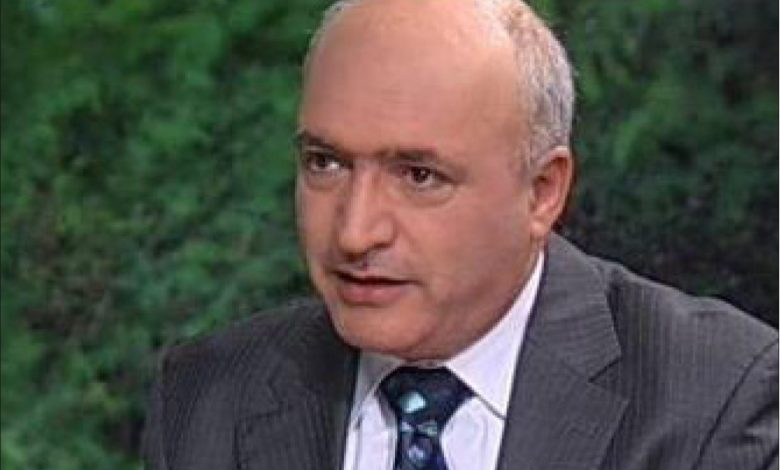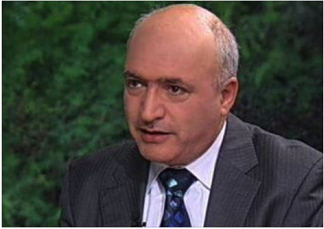What We Will Learn On Sunday By Nasser Kandil

After the likelihood of a cancelled Flags March was withdrawn from consideration regarding Sunday (May 29, 2022), three possibilities remain: a Flags March of a limited number of disciplined participants, an incendiary one in terms of number and conduct, or a hybrid. A symbolic Flags March commemorating the event with limited rituals not bent on escalation, would avoid three confrontations: one with the sons of the Arab Quarters in the Old City, another with the Palestinians stationed in Al Aqsa Mosque, and a wave of escalation by
Al Mukawama Forces in Gaza in response to provocations.
The first possibility, namely a symbolic Flags March going ahead, has three implications. The first is a full absorption of the significance of the announced threats from Gaza by Washington and Tel Aviv, Al Mukawama Axis’ commitment to Gaza, and the strong awareness of the current balance of power and the consequences of an anticipated confrontation slipping out of control and opening the door to a round of regional warfare unfavorable to the Occupation. The second implication is that Washington continues to maintain the ability to exert pressure and control over the Occupation’s behavior and performance including that of its government and military, with a matching ability of the Occupation’s government and military to control its settlers and their extremists, despite all that has been said about the weakening in the chain of command from Washington to Tel Aviv to the Settlers Movement. The third implication is the scene of settlers crowding to emigrate from “Israel” suggesting that the balance of deterrence imposed by Al Mukawama has seeped to their multitudes, and that they have lost a lot of their momentum and vitality despite their and their extremists’ elevated rhetoric and attempts to push their government and military into escalation. The collective balance of these elements would suggest the beginning of a new period providing Al Mukawama in Gaza the opportunity to impose her balance of deterrence as she follows the calendar she announced for her dossiers: lifting the embargo and the release of all prisoners.
The second possibility would be a Flags March provocative in number and conduct, leading to confrontations between marchers and the police, and the dispersion of the march when it reaches the danger point of confrontation with the Palestinians in Jerusalem and those stationed in Al Aqsa Mosque. Such scenario implies that Washington and Tel Aviv are operating within a chain of command and control being fully aware of the balance of deterrence and the associated risks of tampering with it, fearing escalation which opens the door for a regional war. It also implies that the winds of deterrence have not yet reached the droves of settlers and extremists, even though those winds had hit the wider sectors in the Occupation who congregated creating a strong internal political equilibrium in favor of avoiding confrontation. This, in turn, would mean that the Occupation’s government and army possess a new source of power represented by the congregation not in favor of escalation. The result is a winding course in the relationship between the Occupation and Al Mukawama, where each confrontation will require a small or large scale round, as well an increase in the confrontations in the West Bank and the army’s attempt to demonstrate its power.
The third possibility is a confrontation between a provocative Flags March and the Palestinian activists in Jerusalem, residents and those stationed in Al Aqsa Mosque, with the Occupation’s police joining the marchers. This will result in escalation and the spread to confrontations between the Palestinians and the Occupation’s police in the West Bank and the Occupied Land of 1948. In such case, we will be seeing a stern position from Al Mukawama consonant with a warning of the launching of missiles unless the provocations and aggression ceased. This will open the door to a round of confrontation which in the words of Hizballah’s Secretary General Al Sayed Hassan Nasrallah, could possibly usher the region’s detonation.
What this will imply is that the Occupation’s political and military leadership which is aware of the new balances, is also aware that the American roll back is a constant, and believe that a confrontation at the present time will contribute to readying the Zionist congregation to draw boundaries around power. They expect a round that pours cold water on hot heads among settlers and the Occupation’s larger congregation, and lures international intervention to instill calm by opening negotiations around dossiers capable of bringing mid-term stability to the region, particularly the release of prisoners and lifting the embargo on Gaza.




